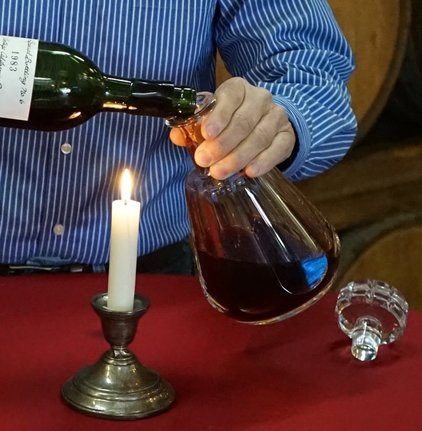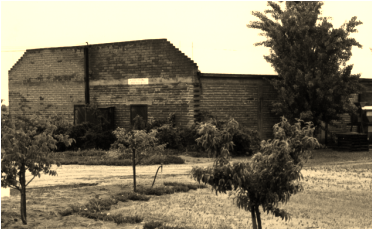Peter Ficklin on Veraison:
Time again when the grapes commence to mature and develop color and soften -- veraison.
The onset of verasion in wine grape berries during the growing season signals important changes occurring in the vineyard. It is a time when we begin to prepare and ready ourselves for the upcoming season: the crush. Berries now leave their growth stage, and begin the process of maturing and proceeding to ripening. They will develop sweetness and balance as they acquire the characteristic flavor and aroma typical of their variety.
We, too, develop our character with harvest. Learned from my father, time is well spent in crush. Time taken to ensure all happens when it should happen -- not sooner and not later -- which pays dividends in the years ahead. Patience, hard-work, the team effort, dedication, attention to detail, and humor all play an equally important role as we guide the transition from grapes to Port during this season. Our work schedule is determined by the grapes and their required timing. Whether it's time to wait, or time to move forward quickly, the process is determined by the needs of the grapes.
Every harvest brings its uniqueness of flavor and character -- sometimes due to Mother Nature and weather conditions, which can influence crop size and harvest timing. Decisions made during crush also play an important role, and each batch of grapes presents a particular set of circumstances, sometimes challenging, but altogether very rewarding.
At maturity, these grapes will be hand-picked and hand-crafted into varietal Ports -- a portion blended and destined for the Old Vine Tinta Port Solera, some to remain in barrels for years developing true Tawny Port character, and a few exceptional Ports for bottling young, perhaps as a 2018 Vintage Port resting in the cellar and to be opened and enjoyed in 20 or 30 years. With patience, we look forward to that, too.
With these grapes, well on their way in the journey to becoming great Port wines and laid down for the future, we all are looking forward to experiencing the upcoming 2018 harvest.
Almost time again... the countdown has begun!
Time again when the grapes commence to mature and develop color and soften -- veraison.
The onset of verasion in wine grape berries during the growing season signals important changes occurring in the vineyard. It is a time when we begin to prepare and ready ourselves for the upcoming season: the crush. Berries now leave their growth stage, and begin the process of maturing and proceeding to ripening. They will develop sweetness and balance as they acquire the characteristic flavor and aroma typical of their variety.
We, too, develop our character with harvest. Learned from my father, time is well spent in crush. Time taken to ensure all happens when it should happen -- not sooner and not later -- which pays dividends in the years ahead. Patience, hard-work, the team effort, dedication, attention to detail, and humor all play an equally important role as we guide the transition from grapes to Port during this season. Our work schedule is determined by the grapes and their required timing. Whether it's time to wait, or time to move forward quickly, the process is determined by the needs of the grapes.
Every harvest brings its uniqueness of flavor and character -- sometimes due to Mother Nature and weather conditions, which can influence crop size and harvest timing. Decisions made during crush also play an important role, and each batch of grapes presents a particular set of circumstances, sometimes challenging, but altogether very rewarding.
At maturity, these grapes will be hand-picked and hand-crafted into varietal Ports -- a portion blended and destined for the Old Vine Tinta Port Solera, some to remain in barrels for years developing true Tawny Port character, and a few exceptional Ports for bottling young, perhaps as a 2018 Vintage Port resting in the cellar and to be opened and enjoyed in 20 or 30 years. With patience, we look forward to that, too.
With these grapes, well on their way in the journey to becoming great Port wines and laid down for the future, we all are looking forward to experiencing the upcoming 2018 harvest.
Almost time again... the countdown has begun!

